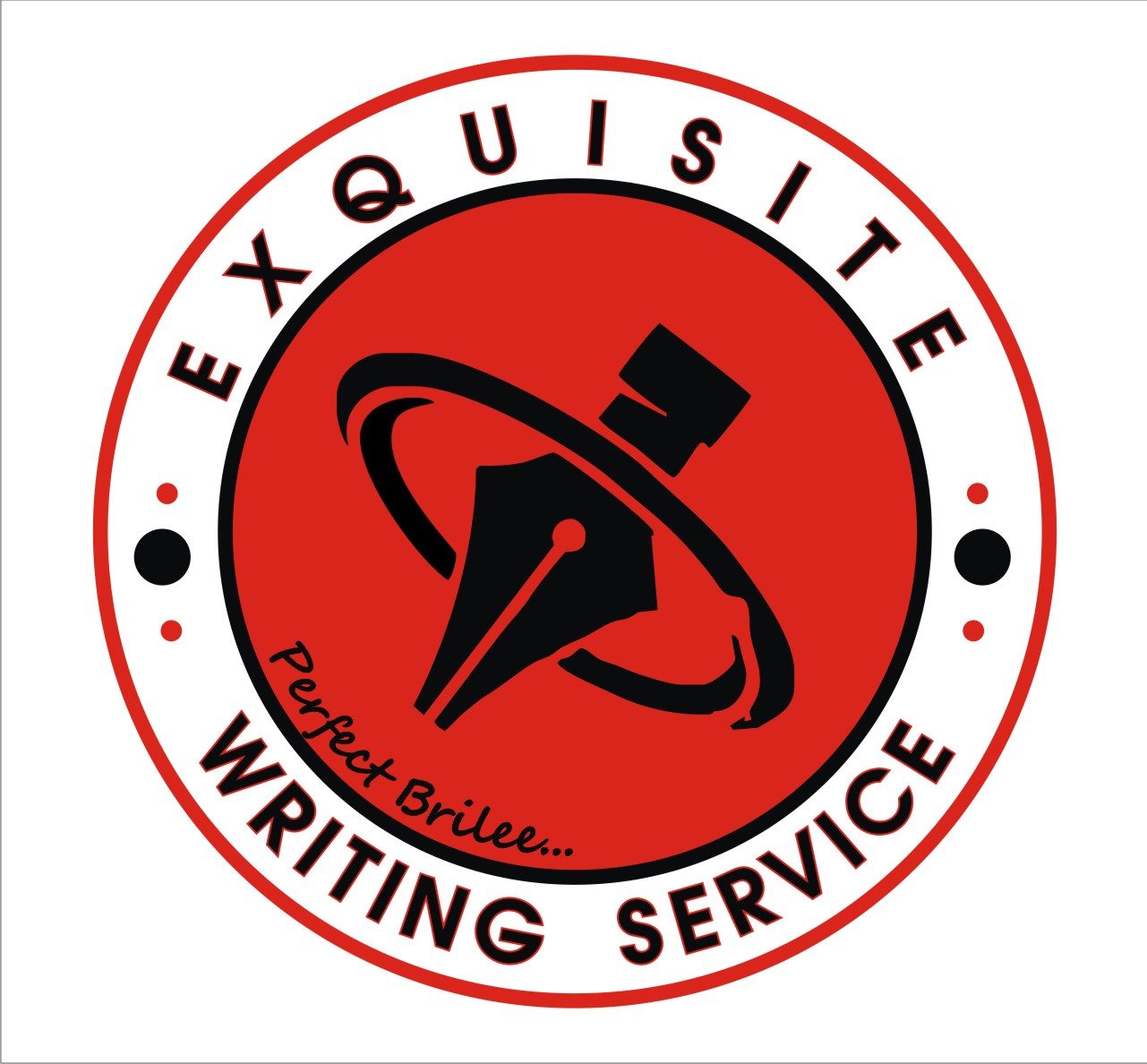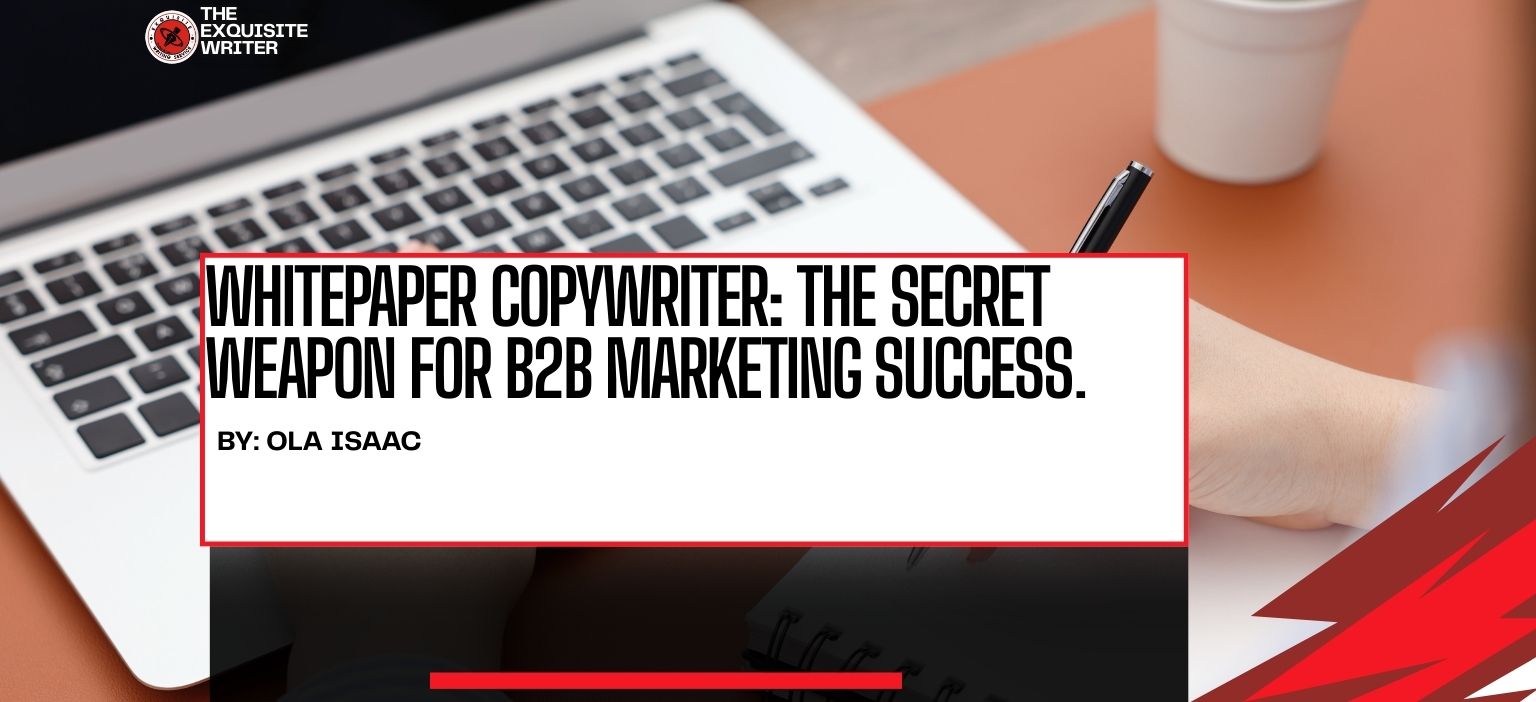Whether you want to learn about the role of a whitepaper copywriter or are looking to hire the best whitepaper copywriter, you are in for a treat!
In today’s business landscape, buyers are more informed and more skeptical than ever. They don’t want fluff, vague promises, or flashy ads. All they want is substance!
They desire proof that a company understands their problems and has the expertise to solve them.
A well-crafted whitepaper builds trust, positions your brand as an authority, and guides potential customers toward choosing your solution.
In B2B marketing, whitepapers remain one of the most respected credibility assets because they combine research, expert insights, and strategic storytelling.
However, creating one isn’t easy. It requires more than just writing skills—it demands strategy, research, and the ability to transform complex information into persuasive storytelling.
In this article, we’ll break down everything you need to know. You will learn about what a whitepaper copywriter does, why they matter, how to hire the right one—-and even how a whitepaper is structured.

What Is a Whitepaper Copywriter?
A whitepaper copywriter is a professional writer who specializes in producing in-depth, research-based documents for businesses—especially in B2B industries. Their job is to:
- Educate prospects about an industry issue or solution.
- Establish thought leadership for the brand.
- Nurture leads through a longer sales cycle.
- Support sales teams with credible, persuasive assets.
Unlike ads or blog posts, whitepapers don’t “hard sell.” Instead, they help guide decision-makers by presenting data, analysis, and logical arguments, while subtly positioning your solution as the best choice.
Think of them as a hybrid between a journalist, a researcher, and a marketer.
Why Whitepapers Are Critical in B2B Marketing
According to the Demand Gen Report, 71% of B2B buyers use whitepapers to help make purchasing decisions. Why? Because whitepapers combine depth with credibility.
Here’s what makes them so powerful:
- Authority: They demonstrate expertise in a field.
- Trust: They are perceived as unbiased, data-backed resources.
- Lead generation: Whitepapers are often gated content, making them excellent for capturing emails.
- Sales enablement: Sales reps can send them to prospects as evidence of a company’s knowledge and reliability.
- Evergreen value: A strong whitepaper can remain useful for years, driving consistent leads.
But here’s the fact: Not all whitepapers deliver results. Poorly written ones can overwhelm readers with jargon, bore them with statistics, or even fail to connect to real business pain points.
That’s why businesses turn to whitepaper copywriters for help!
Related Read: Hiring a Top Content Writing Agency: 5 Questions Worth Asking
The Role of a Whitepaper Copywriter
A professional whitepaper copywriter does more than just write. Their responsibilities often include:
1. Deep Research
The foundation of any successful whitepaper is solid research.
A whitepaper copywriter doesn’t just start writing—they first immerse themselves in your business, industry, and audience to uncover the insights that will make the content persuasive and authoritative.
This process often includes:
- Industry analysis: Studying market trends, regulatory shifts, and emerging technologies that influence your audience’s decisions.
- Competitor benchmarking: Reviewing competitor whitepapers, blogs, and case studies to identify gaps your company can fill.
- Product understanding: Learning the ins and outs of your offering, not just the features but also the benefits that resonate with buyers.
- Audience Research: Mapping out who the whitepaper is targeting (C-suite executives, technical managers, procurement officers) and what their pain points are.
- SME Interviews: Extracting knowledge from your in-house experts. A skilled whitepaper copywriter knows how to ask the right questions to capture insights that aren’t publicly available.
Research-backed frameworks from organizations like the Content Marketing Institute also highlight that whitepapers are among the top three most effective forms of B2B content for educating buyers.
This level of research ensures the whitepaper doesn’t read like generic content.
It positions your brand as the voice of authority in a crowded market.
2 Structuring the Argument
Unlike a blog post or sales page, a whitepaper isn’t just about presenting information.
The goal is about building a logical, evidence-based case that naturally leads the reader to your solution. That’s why structure matters just as much as content.
A professional whitepaper copywriter carefully designs the narrative to take the reader on a journey:
- The problem: Clearly define the issue the target audience is facing. This grabs attention and shows you understand their challenges.
- The Stakes: Demonstrate why this problem matters now. Use data, case studies, or trends to create urgency.
- The evidence: Present credible research, statistics, and examples that validate the problem and build trust.
- The Solution Framework: Introduce a way forward, often supported by best practices or industry recommendations.
- Your Solution (Positioned Subtly): Show how your product or service fits into the framework, without turning the paper into a sales brochure.
- The Call to Action: Encourage the next step, whether that’s booking a demo, reading a case study, or contacting sales.
This structure ensures the whitepaper feels authoritative and objective, while still guiding the reader toward your company as the logical choice.
3. Simplifying Complexity
One of the most valuable skills a whitepaper copywriter brings to the table is the ability to take highly technical or specialized information and make it accessible to a broader audience.
In B2B, your readers aren’t always technical experts, they might be CFOs, procurement managers, or operations directors.
These people make final purchasing decisions, but they don’t always speak the technical language your engineers or product developers use.
A skilled copywriter acts as a translator between your subject matter experts and your target audience. They know how to:
- Cut through jargon: Replace overly technical terms with clear, everyday language, without oversimplifying.
- Use analogies and metaphors: Compare complex processes to familiar concepts to make them easier to grasp.
- Layer the explanation: Present content in stages: start with the high-level concept, then drill into specifics for readers who want more depth.
- Balance accuracy and clarity: Ensure that simplifying doesn’t distort or weaken the technical truth.
For example, instead of writing:
“Our system employs an AI-driven predictive analytics framework that leverages real-time machine learning algorithms to detect anomalies in structured and unstructured datasets.”
A whitepaper copywriter might say:
“Our platform uses artificial intelligence to spot unusual patterns in your data, like a credit card charge that doesn’t fit your typical spending habits, so problems are flagged before they become crises.”
Same accuracy. Easier to understand. More persuasive.
4. Storytelling with Data
While data is essential for credibility, data alone rarely persuades.
A long list of statistics risks overwhelming or boring your readers.
What makes numbers meaningful is the story behind them—and that’s where a whitepaper copywriter excels.
They weave figures, facts, and case studies into a compelling narrative that resonates emotionally as well as logically. Here’s how:
- Humanizing the numbers: Instead of just saying “80% of companies face this issue,” the copywriter illustrates what that problem looks like in a real business context.
- Case study storytelling: Turning customer results into before-and-after stories that highlight the transformation your solution enables.
- Cause and effect framing: Showing not just the statistic, but why it matters: “Without a proactive system, downtime costs businesses an average of $300,000 per hour. That’s money lost, reputation damaged, and opportunities missed.”
- Visual reinforcement: Suggesting where charts, graphs, or infographics should appear to make numbers easier to digest.
Think of it like this: Data informs, but storytelling convinces. A skilled whitepaper copywriter makes the statistics memorable by giving them context, narrative, and relevance to the reader’s world.
5. Strategic Framing
A whitepaper is often a long article, but it isn’t just about the length.
It’s a carefully crafted marketing asset.
That means every paragraph, section, and even word choice needs to strike a balance between educating the reader and building a bridge to your solution.
This balance is what sets a professional whitepaper copywriter apart from a general writer.
Strategic framing involves:
- Positioning your brand as the authority: Without overtly selling, the copywriter makes sure your company’s perspective comes across as the most logical and credible.
- Guiding the reader’s thought process: Each section flows in a way that moves the reader from awareness of the problem to recognition of the stakes to openness to solutions.
- Highlighting the “why you” factor: The copywriter subtly aligns the solution framework with the unique strengths of your product or service, so readers naturally connect the dots.
- Avoiding salesy language: A whitepaper that feels like a brochure loses trust. A skilled copywriter frames the content to feel objective and research-driven, while still nudging the reader toward your brand.
- CTA placement: They know where and how to include calls-to-action that don’t interrupt the flow—like ending with an invitation to download a case study, schedule a demo, or learn more.
In short, strategic framing ensures your whitepaper isn’t just informative but also commercially effective.
It educates readers while gently steering them closer to choosing your solution.
6. Polished Presentation
The final step is about turning all that research, strategy, and writing into a professional, polished asset that reflects well on your brand.
Remember: whitepapers are often consumed by senior executives and decision-makers.
If the document looks sloppy or reads awkwardly, it undermines your credibility.
A skilled whitepaper copywriter ensures the presentation is as strong as the content by focusing on:
- Tone and voice alignment: Matching the document’s style with your brand voice, whether it’s authoritative, innovative, or approachable.
- Clarity and flow: Editing ruthlessly so every sentence adds value and transitions feel natural.
- Visual hierarchy: Structuring the text with headings, bullet points, and highlights so busy readers can skim and still grasp key points.
- Professional formatting: Suggesting layout, design elements, and visuals that make the whitepaper easy to navigate and visually appealing.
- Error-free writing: Delivering copy that’s grammatically flawless and factually accurate, because in B2B marketing, small mistakes can cost big credibility.
When all these elements come together, the result isn’t just a whitepaper.
It’s a flagship marketing asset your sales and marketing teams can use with confidence to attract leads and win business.
Whitepaper Copywriter vs. Regular Copywriter
Here’s how they differ:
General Copywriter Whitepaper Copywriter
Focuses on blogs, ads, social posts Specializes in long-form, research-based documents
Optimized for engagement & conversions Optimized for authority, trust, and sales enablement
Tone: conversational, punchy Tone: authoritative, professional, persuasive
Research is light to moderate Research is deep and often includes interviews, case studies, data
Appeals to wide audiences Appeals to decision-makers in specific industries
In short: both are valuable, but a whitepaper copywriter is a specialist.
When Do You Need a Whitepaper Copywriter?
Not every situation calls for a whitepaper, but here are the signs your business would benefit:
- You’re launching a new product and need to educate the market.
- You’re in a technical industry (IT, finance, SaaS, healthcare) where buyers need in-depth analysis before committing.
- You want to nurture leads who aren’t ready to buy yet.
- You’re competing in a crowded market and need thought leadership content to stand out.
- You want to give your sales team a resource that supports their outreach.
How to Choose the Right Whitepaper Copywriter
Not all writers are created equal. Here’s what to look for:
- Portfolio samples: Do they have experience writing whitepapers or long-form B2B content?
- Industry knowledge: Can they quickly grasp your product, market, and buyer personas?
- Research ability: Do they know how to find credible sources and present data persuasively?
- Clarity and flow: Can they turn complexity into clarity without dumbing it down?
- Marketing mindset: Do they understand how whitepapers fit into the sales funnel?
Tip: Ask to see not just samples, but also results. Did their whitepaper help generate leads or close deals?
The Anatomy of a Whitepaper
A whitepaper typically follows a structured format. Here’s a sample outline:
- Title page – Engaging headline, subtitle, and branding.
- Executive Summary – Quick overview of what’s inside.
- Introduction – Why this problem matters.
- Problem Statement – Clear explanation of the issue facing the industry or audience.
- Research and Evidence – Data, statistics, and case studies supporting the problem.
- Proposed Solution – Presenting your approach or product (subtly).
- Benefits and Proof – Showing real-world results, ROI, and testimonials.
- Conclusion – Wrapping up with authority.
- Call-to-Action (CTA) – Next steps: download a case study, book a demo, contact sales, etc.
A good copywriter knows how to keep the document engaging while following this structure.
Example: How a Whitepaper Copywriter Transforms Content
Imagine you’re a SaaS company offering a cybersecurity solution. A regular writer might produce a whitepaper titled “The Importance of Cybersecurity.”
But a skilled whitepaper copywriter would go deeper:
- Title: “The Rising Cost of Data Breaches in 2025: Why Proactive Security Saves Millions”
- Problem: Show how data breaches have increased by 32% in the past year.
- Evidence: Cite credible sources, highlight real breaches, show financial impact.
- Solution: Present proactive monitoring (your SaaS) as the logical next step.
- CTA: Encourage readers to book a demo to see how it works.
The difference? One is generic. The other is persuasive, data-driven, and aligned with sales goals.
How Whitepapers Fit Into Your Sales Funnel
A whitepaper copywriter doesn’t just create content in isolation, they create an asset that drives results across your marketing funnel:
- Top of funnel (awareness): Attracts attention by addressing industry challenges.
- Middle of funnel (consideration): Educates and builds trust, keeping your brand top of mind.
- Bottom of funnel (decision): Provides evidence and reassurance that your solution is the right choice.
When paired with email marketing, webinars, and case studies, whitepapers can dramatically shorten the sales cycle.
Cost of Hiring a Whitepaper Copywriter
The cost varies based on experience, industry, and complexity.
Here’s a rough breakdown:
- Entry-level: $500 – $1,000 per whitepaper
- Experienced B2B copywriter: $2,000 – $5,000 per whitepaper
- Top-tier specialists: $7,500+ for high-stakes industries like finance, healthcare, or enterprise SaaS
It may sound like a big investment, but remember, a single whitepaper can generate leads and support sales for years.
Next: B2B SaaS SEO: A Complete Guide to Scaling Organic Growth
Final Thoughts
In B2B marketing, credibility and trust win deals.
Industry bodies like Demand Gen Report, CMI, and Gartner consistently rank whitepapers as top-performing content for lead nurturing and decision-stage marketing.
A well-crafted whitepaper is one of the most effective ways to earn both—but only if it’s done right.
That’s why hiring a whitepaper copywriter is such a smart move.
They don’t just write, they persuade, research, and strategically position your brand as the authority in your space.
Whether you’re launching a product, competing in a crowded market, or nurturing leads in a long sales cycle, a skilled whitepaper copywriter can give you the edge you need!
Are you serious about building trust, generating leads, and closing deals? Investing in a professional whitepaper copywriter isn’t just smart—it’s essential!

